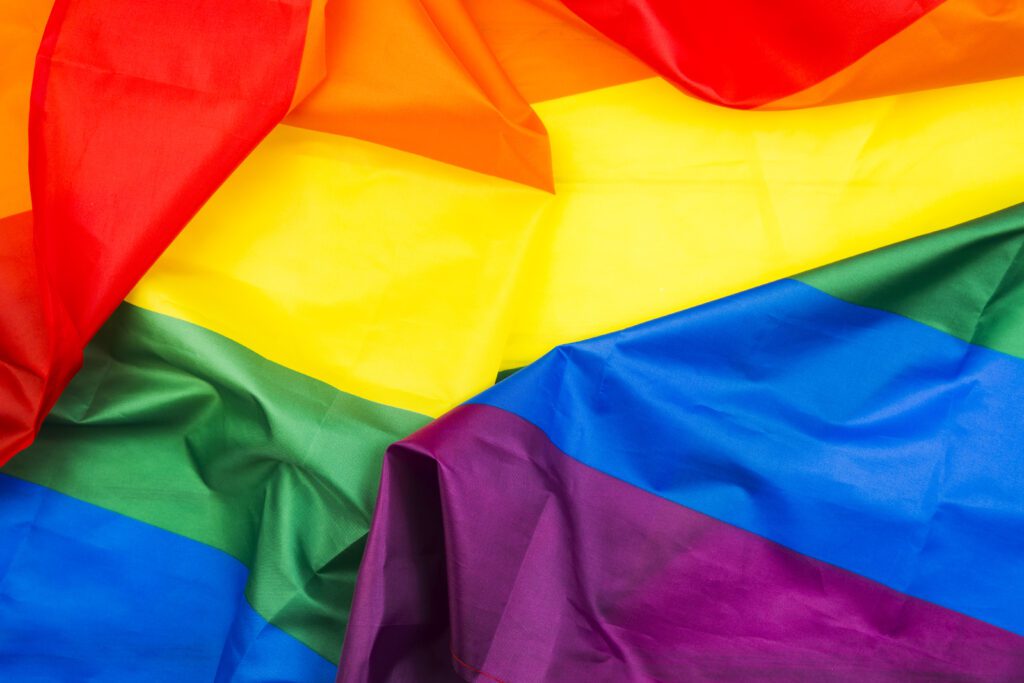Promoting LGBTQ Inclusion in the Modern Workplace
May 16, 2024


LGBTQ inclusion at the workplace is often an aspect of diversity that is overlooked or easily forgotten compared to other aspects of diversity and inclusion. This is largely due to the stigma and biases surrounding the topic. However, it is not just moral and ethical responsibility to establish inclusive policies for LGBTQ communities at the workplace, but it also promotes higher productivity rates, fosters psychological safety, and improves morale for all employees.“
A study by Dellioit states that four in 10 respondents (42%) have experienced non-inclusive behaviours in a work context and just less than half say they are certain they experienced them as a result of their sexual orientation or gender identity
What is LGBTQ?
LGBTQ is an umbrella term used to refer to different sexualities and gender identities, with the acronym standing for lesbian, gay, bisexual, transgender, and queer. The “plus” recognises the growing understanding and inclusion of other identities under the LGBTQ umbrella. This includes individuals who are questioning, intersex, asexual, pansexual, genderfluid, and non-binary.
The Importance of LGBTQ Inclusion:
LGBTQ inclusion goes beyond just compliance with anti-discrimination laws; it’s about creating a culture where everyone feels safe, supported, and able to bring their authentic selves to work. Research consistently shows that diverse and inclusive workplaces outperform their counterparts in terms of innovation, employee engagement, and overall business performance. By embracing LGBTQ inclusion, organisations can tap into the full potential of their workforce and drive positive outcomes for both employees and the bottom line.
LGBTQ inclusion in the workplace is crucial for several reasons. Here’s a breakdown of its importance:
Benefits for Employees:
LGBTQ inclusion strategies play a vital role in crafting a positive employee experience. Which includes:
Belonging and Safety:
LGBTQ employees who feel accepted and respected are more likely to be engaged, productive, and satisfied in their work.
Reduced Stress:
A fear of discrimination or feeling like they can’t be themselves can cause stress for LGBTQ workers. An inclusive environment reduces this burden.
Equal Opportunity:
Inclusion ensures everyone has a fair shot at promotions, recognition, and career advancement.
Benefits for Businesses:
LGBTQ inclusion can give your company a strategic edge and a positive brand image
Talent Acquisition:
Top talent is increasingly looking for companies that value diversity and inclusion. LGBTQ inclusion allows you to attract a wider pool of qualified candidates.
Innovation and Creativity:
Diverse teams bring a wider range of perspectives to the table, leading to more creative solutions and problem-solving.
Positive Reputation:
Customers and investors are drawn to companies that embrace LGBTQ inclusion, enhancing your brand image.
Challenges Faced by LGBTQ Employees:
While repealed, the historical stigma associated with Section 377 can still deter some LGBTQ individuals from being open about their identity at work. Awareness about LGBTQ issues and inclusive workplaces can be lower in some regions especially in semi-urban areas.
Despite significant progress in LGBTQ rights and visibility, many challenges persist for LGBTQ individuals in the workplace. Discrimination, harassment, and microaggressions based on sexual orientation and gender identity are still prevalent in many organisations.A significant number, 36% of LGBTQ people, make job decisions based on fear of discrimination. This is even higher (65%) for transgender or non-binary individuals [Catalyst LGBTQ Workplace Issues]. LGBTQ employees often face barriers to advancement, experience higher levels of stress and anxiety, and may struggle to access appropriate benefits and support. Addressing these challenges requires a proactive approach to LGBTQ inclusion at all levels of the organisation.
How to hire in the LGBTQ Community
Studies show that companies with strong LGBTQ inclusion outperform their peers. But how do you attract and hire qualified candidates from this vibrant and talented community? Here are some key strategies:
Positioning the Organisation:
Make a clear, visible statement that your organisation prohibits discrimination based on sexual orientation and gender identity. Include it in job postings, your careers page, and the employee handbook. Avoid gendered language in your job descriptions. Use terms like “team member” or “they/them” pronouns. At PeopleNorth we have helped organisations craft inclusive job descriptions and career posts to elevate their chance to source from the community.
LGBTQ focused Recruitment:
Post your openings on platforms and mention that they are specifically geared towards LGBTQ job seekers. PeopleNorth ensures that we identify the right LGBTQ recruitment channels and focus on finding the genuine fit for the job. We curate a community which helps us build a talent pipeline with ease.
Employee referral programs:
Encourage current LGBTQ employees to refer qualified candidates from their networks.
Unconscious Bias Training:
Ensure hiring managers are trained on unconscious bias to make decisions based solely on qualifications. At PeopleNorth, all our hiring executives are trained in unconscious bias and sensitivity to ensure the smoothest recruitment process.
Strategies for LGBTQ Inclusion:
Creating a workplace where everyone feels welcome and valued is not only the right thing to do, it’s also good for business. Here are some key strategies to put LGBTQ inclusion into action:
Implement Comprehensive Policies:
Develop and enforce policies that explicitly prohibit discrimination based on sexual orientation, gender identity, and expression. These policies should be clearly communicated to all employees and include procedures for reporting and addressing violations.
Provide Diversity and Inclusion Training:
Offer training programs to educate employees about LGBTQ issues, terminology, and the importance of fostering an inclusive workplace culture. These sessions can help build empathy, awareness, and understanding among staff members and create a more supportive environment for LGBTQ employees.
Offer Benefits and Support:
Provide LGBTQ-specific benefits such as health care coverage for transition-related procedures and access to support resources like employee resource groups (ERGs) or affinity groups. These initiatives demonstrate a commitment to supporting the LGBTQ community within the organisation and can make a significant difference in the lives of LGBTQ employees.
Create Safe Spaces:
Designate areas within the workplace as safe spaces where LGBTQ employees can feel comfortable being themselves without fear of discrimination or harassment. Display LGBTQ-inclusive signage and symbols to signal that the organisation values diversity and is committed to creating an inclusive environment for all.
Promote LGBTQ Representation:
Ensure that LGBTQ individuals are represented at all levels of the organisation, including leadership positions. Visibility and representation can help validate the experiences of LGBTQ employees and contribute to a more inclusive workplace culture where diverse perspectives are valued and respected.
Address Microaggressions and Bias:
Take proactive measures to address microaggressions, unconscious bias, and stereotyping within the workplace. Encourage open dialogue and provide resources for addressing and challenging discriminatory behaviours. Training programs and awareness campaigns can help raise awareness and foster a culture of respect and inclusion.
Support Employee Resource Groups:
Empower LGBTQ employee resource groups to advocate for the needs of LGBTQ employees, organise events, and facilitate community-building initiatives. These groups can serve as valuable resources for both LGBTQ employees and allies and help foster a sense of belonging and support within the organisation.
Celebrate LGBTQ Events:
Recognise and celebrate LGBTQ events such as Pride Month, Transgender Day of Remembrance, and National Coming Out Day. Hosting events, participating in parades, and displaying visible support during these occasions can foster a sense of belonging for LGBTQ employees and demonstrate the organisation’s commitment to LGBTQ inclusion.
Partner with LGBTQ Organisations:
Collaborate with external LGBTQ organisations and advocacy groups to access resources, share best practices, and demonstrate a commitment to LGBTQ inclusion both within and outside the workplace. Building partnerships with LGBTQ organisations can help organisations stay informed about emerging issues and trends and leverage the expertise of the broader LGBTQ community.
Measure Progress and Solicit Feedback:
Regularly assess the effectiveness of LGBTQ inclusion initiatives through surveys, focus groups, and feedback mechanisms. Use this information to refine strategies, address gaps, and continuously improve the workplace environment for LGBTQ employees. Soliciting feedback from LGBTQ employees and incorporating their perspectives into decision-making processes is essential for creating an inclusive workplace where everyone feels valued and respected.
Conclusion
LGBTQ inclusion in the modern workplace is not just the right thing to do; it’s also the smart thing to do. By embracing LGBTQ inclusion, organisations can create a more diverse, equitable, and inclusive workplace where every individual feels valued, respected, and able to thrive. By implementing comprehensive policies, providing education and support, creating safe spaces, promoting representation, and celebrating diversity, organisations can build a culture of inclusion where LGBTQ employees can bring their whole selves to work and contribute to the organisation’s success. Together, we can create workplaces where diversity is celebrated, differences are respected, and everyone has the opportunity to reach their full potential.
About Author
Team PeopleNorth
Related Stories


How POSH Training Shapes a Harassment-Free Workplace for Your Organisation
Know what is POSH training and how can POSH training for employees help them. Know why POSH training a priority for every organisation.


Role of Effective Communication in Leadership
Discover the impact of effective communication in leadership. Build skills, foster trust, and make lasting differences.


Effective ways to nourish and protect your mental health for career growth
Unless your mental health is in good shape, it can thwart career growth. It’s prudent to try some handy tips to combat stress and anxiety.


Understanding the Importance of retaining employees of high potential
Retaining employees of high potential is a prerequisite for businesses. Developing and deploying effective strategies for it matters.


Work from Home for Women: Is it just women who prefer Work from Home?
Discover if it’s solely work from home for women. Explore the advantages and opportunities of remote work for women in various industries.


A comprehensive guide to Succession Planning in business setups
Succession planning enables businesses to tackle stalemates triggered by key employee exodus effectively. It helps continuous growth and better work ambiance.
